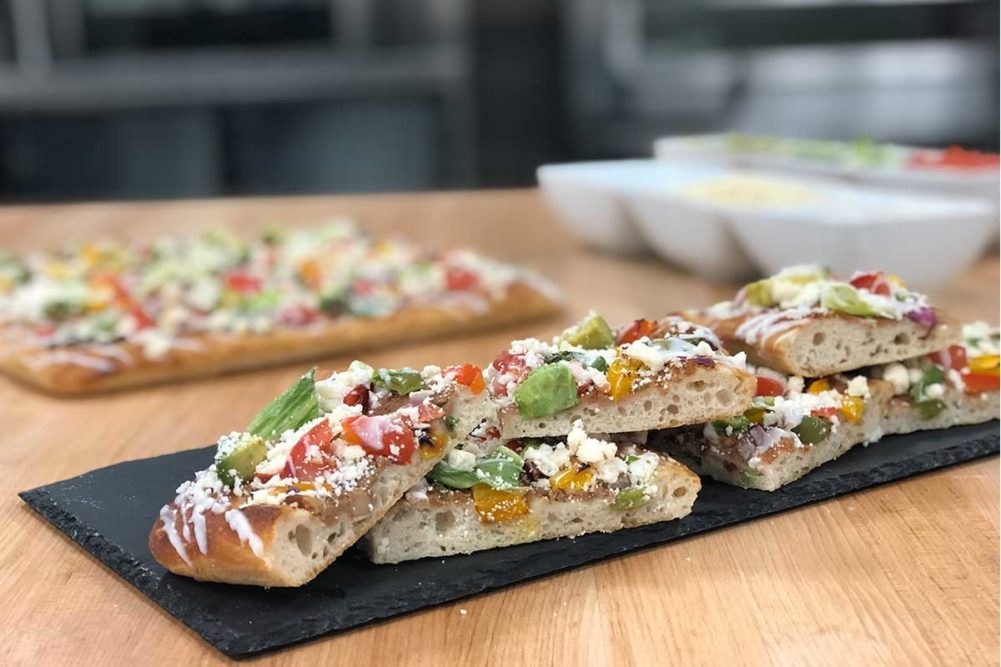When adding shortening to a mixing bowl, scaling can become an issue of labor and accuracy. Shortening is packed in 50-lb cubes. These cubes must be unboxed and scaled before being added to the mixing bowl, taking up labor, a precious resource in the bakery these days. Different formats can ease this burden.
Flaked shortenings can improve scaling for large volumes. They also have functionality benefits for applications that benefit from an open-crumb structure or light layers, like pizza crusts, flatbreads, pie crusts or biscuits.
“AAK offers a large variety of flaked shortenings which are free flowing, making them simple to scale and easy to incorporate into dough and batter systems,” said Andrea Weis, scientist II, AAK USA. “Flaked shortenings can improve the process tolerance of temperature sensitive doughs due to their higher melt point, allowing for more temperature flexibility on the production floor.”
Liquid shortening provides functionality with the aid of emulsifiers and is easy to scale and add to the mixer.
“Liquid shortening can be added through a pumping or metering system,” Dr. Yin said.
Enabling automated scaling of shortening helps remove any operator error that comes from manually scaling cubed shortening and relieves the reliance on institutional knowledge.
“Emulsifiers bring back some of the aeration properties into the liquid shortening, so a manufacturer can just meter the liquid shortening into their process and still have the tenderness they are looking for without having to use packaging and measuring a traditional votated shortening,” explained Kristine Thomas, senior scientist, bakery team, Corbion.
These formats as well as shortenings with broad functionality and useability can ease some labor challenges.
“As we’re getting the new generation of workers, we’re moving from being a manufacturer to an assembler,” said Roger Daniels, vice president, research, development, innovation and quality, Stratas Foods. “On the shortening side of it, whatever we can do with our Flex and blending technology to broaden the functionality and useable range helps an individual operator who needs to know how to put X amount in a recipe as opposed to knowing why they are putting X amount into a recipe.”
With more stable shortenings, both for plasticity and oxidation, bakers can achieve consistent quality baked goods.
This article is an excerpt from the August 2021 issue of Baking & Snack. To read the entire feature on Fats & Oils, click here.






